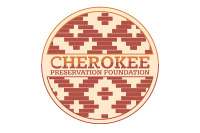Predator beetles work for all hemlocks
To the Editor:
Congratulations to the National Park Service for getting the word out about the predator beetles being used to protect our hemlocks in the Great Smoky Mountain National Park. However, there is a factual error in this article in the assertion that the origin of the Sasaji-scymnus tsugae beetle is “northern Japan.” In fact, the origin location for this predator beetle is the Osaka area in southern Japan, the same origin as our hemlock wooly adelgid [HWA] “import.” So this beetle is a native predator for our HWA.
It is good to know that the massive USDA-funded HWA predator beetle releases on public hemlock lands (about 500,000 per year for more than 10 years) are being recognized as effective. But what about the hemlocks on private lands?
The good news is that the Sasi (Sasajiscym-nus tsugae) predator beetle has also been shown effective on privately-owned hemlock lands, both woodland and residential. And there is a noncommercial source to obtain information about bio-control of HWA on private lands (www.savinghemlocks.org <http://www.savinghemlocks.org/), as well as a commercial source for private landowners to purchase these predator beetles (www.Tree-Savers.com, http://www.Tree-Savers.com/).
But while USDA is releasing large quantities of HWA predator beetles on public lands, they and their colleagues at USFS and N.C. Exten-sion typically advise private landowners against using the same USDA-approved predator beetles on private lands. The rationale for this misinformation campaign is unclear. But what is clear is that hemlock areas in WNC that don’t receive biological control assistance for HWA will have little or no prospect for long-term hemlock survival or recovery.
So unless you want your only access to our eastern hemlocks to be on state and national park and forestlands, you should consider an HWA biological control strategy for hemlocks on your own property.
Patrick Horan
Sapphire





